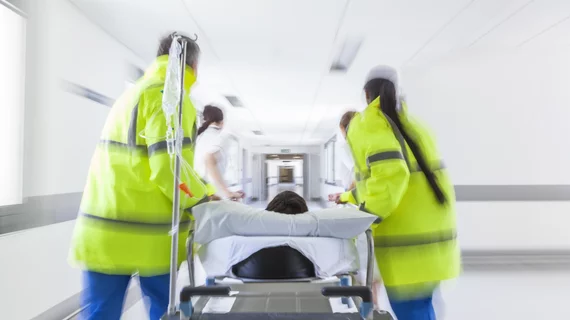Cardiac arrest numbers highlight the pandemic’s long-term impact on patient care
Rates of out-of-hospital cardiac arrest (OHCA) increased significantly during the early months of the COVID-19 pandemic. OHCA outcomes were also much worse during that same time period, making a tough situation even more chaotic for patients and health systems alike.
According to a new analysis published in Health Affairs, one of the biggest drivers behind these changes was the COVID-related anxiety and unease felt by so many people all over the world.
The study’s authors investigated emergency medical services (EMS) data and COVID-19 infection counts in the Boston area from March 15 to June 8, 2020. Those dates were chosen because they coincide with when stay-at-home advisories were put into place due to the escalating pandemic. Data from June 9 to August 31 was also assessed to gain a better understanding of how these trends were affected by the stay-at-home advisories being lifted.
Overall, the researchers found, OHCA incidence increased by 35.5% during that initial phase of the COVID-19 pandemic. Also, the number of cardiac calls decreased by 27.2%. There was also a 32.5% increase in cardiac calls where the patient refused transportation to the hospital—and a whopping 340% increase in the number of calls where a patient refused transportation and then had an OHCA.
After that initial phase, OHCA incidence remained at a higher level—up 24.8% compared to previous years—and the number of cardiac calls remained lower than normal, down 17.2% compared to previous years. The number of cardiac calls where patients refused transportation also remained slightly higher, up 13.4 %, but the number of calls where a patient refused transportation and then had an OHCA was no longer significantly different compared to previous years.
In addition, the team found, OHCA incidence was positively associated with that initial wave of the pandemic—but it did not seem to be closely linked to neighborhood infection rates.
“This study supports the hypothesis that treatment delays resulting from increased patient reluctance to obtain urgent care contributed to the increased absolute and relative volume of non–nursing home out-of-hospital cardiac arrest incidence and death during the COVID-19 pandemic,” wrote Christopher Sun, PhD, a fellow at the Massachusetts Institute of Technology in Cambridge, Massachusetts, and colleagues. “Specifically, the substantial decrease in cardiac calls and increase in hospital transportation refusals during the pandemic supports the hypothesis of increased patient reluctance to seek EMS and in-hospital care.”
Sun et al. called for additional time and energy to go toward telling the public to use emergency services when needed.
“It is also vital that patients call EMS or visit the emergency department if they are having chest discomfort, to be evaluated by a clinician and assessed for ST-elevation myocardial infarction, a leading cause of OHCA,” they added. “Patients should also use telehealth services, where available, for continued management of chronic risk factors. This is especially critical for women and people younger than age 55, given the persistent reluctance to seek care observed within these groups.”
Read the full study here.

